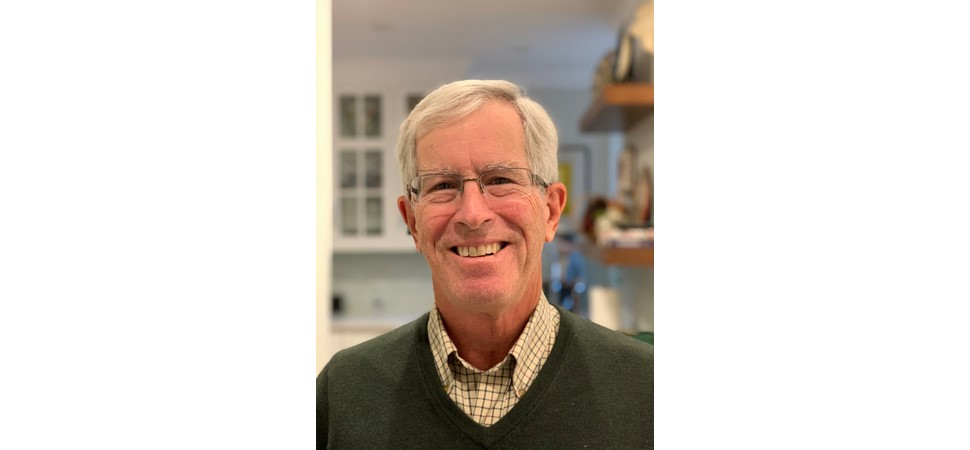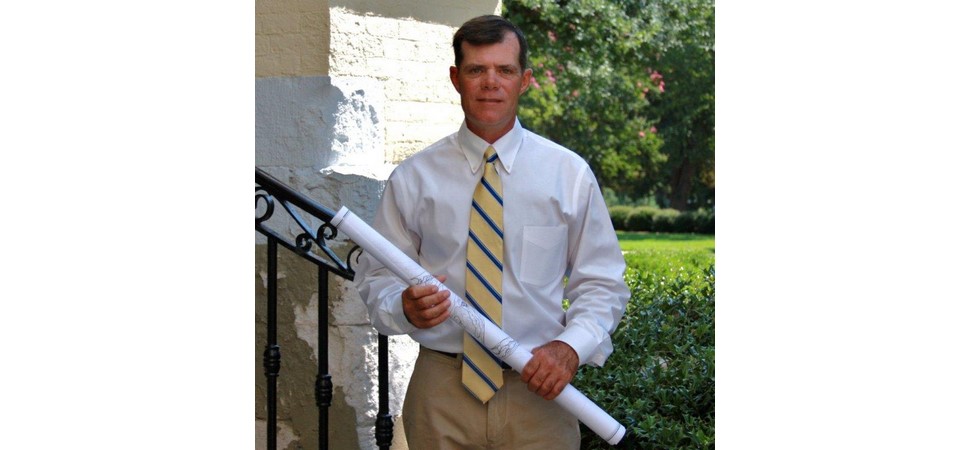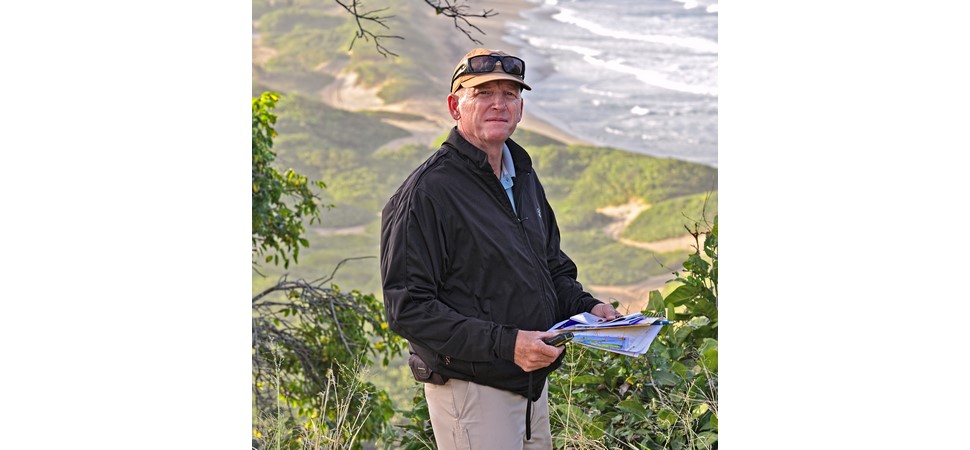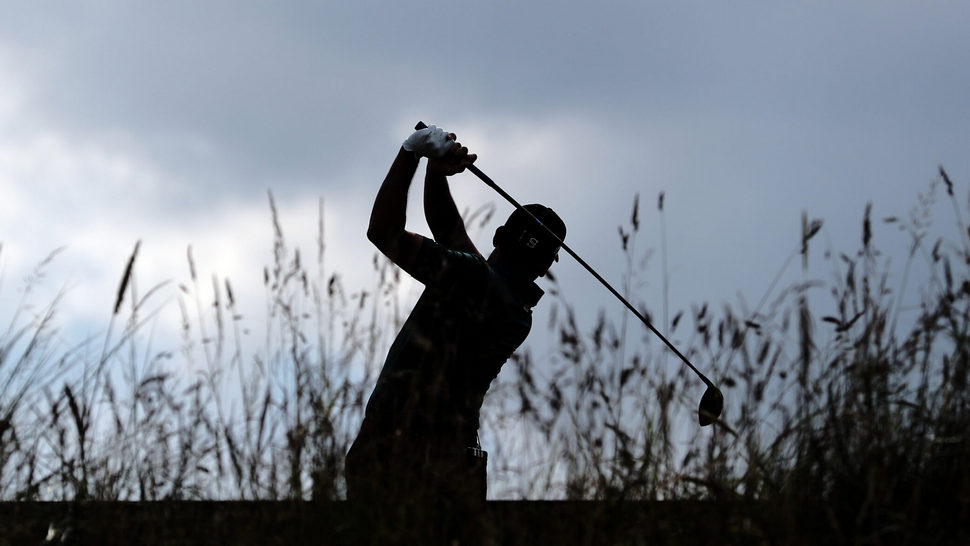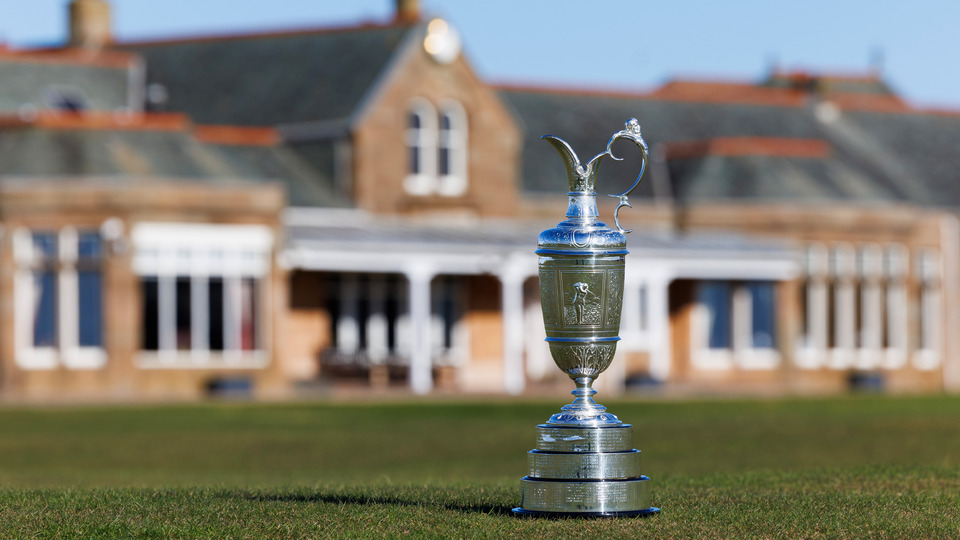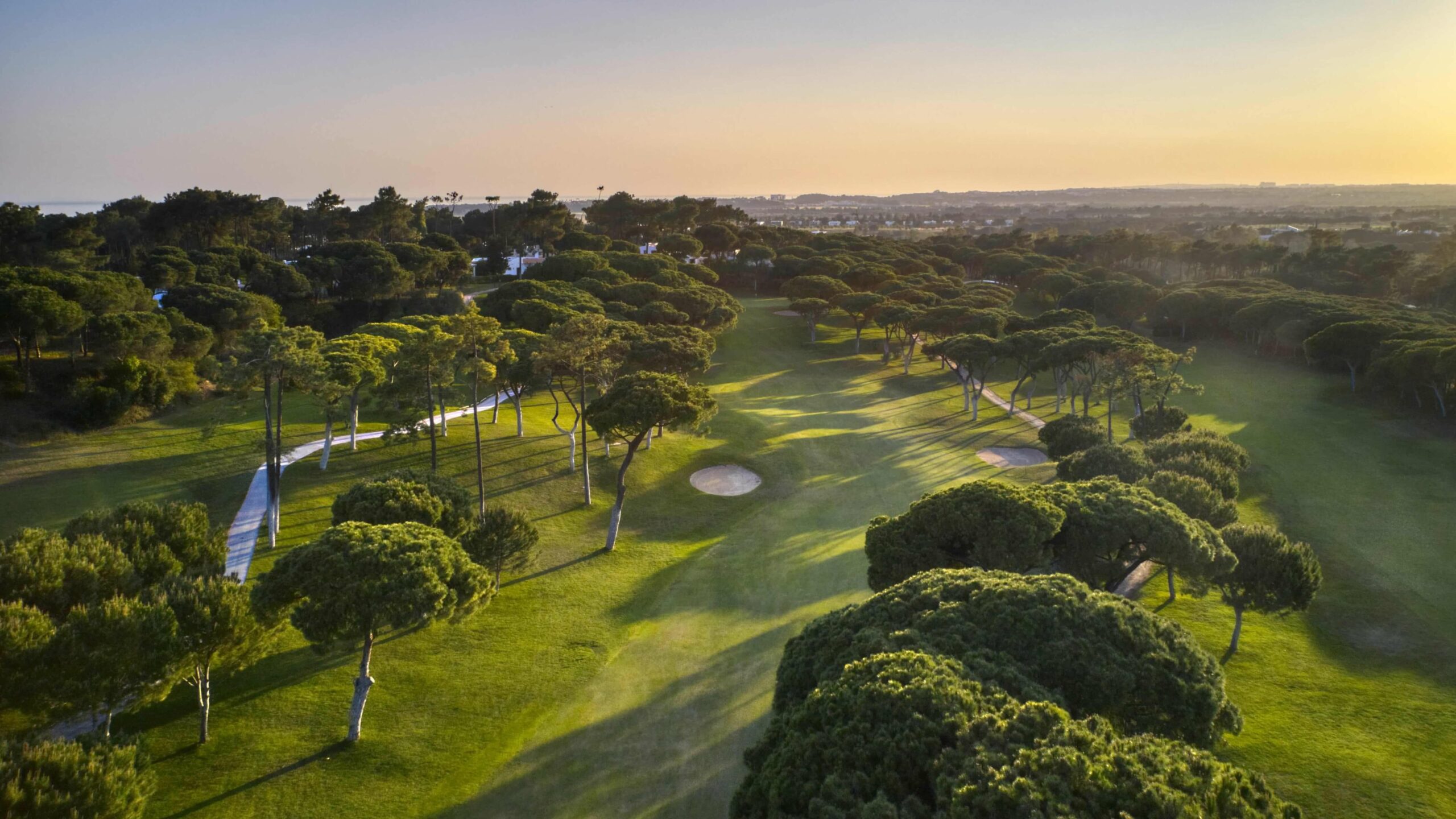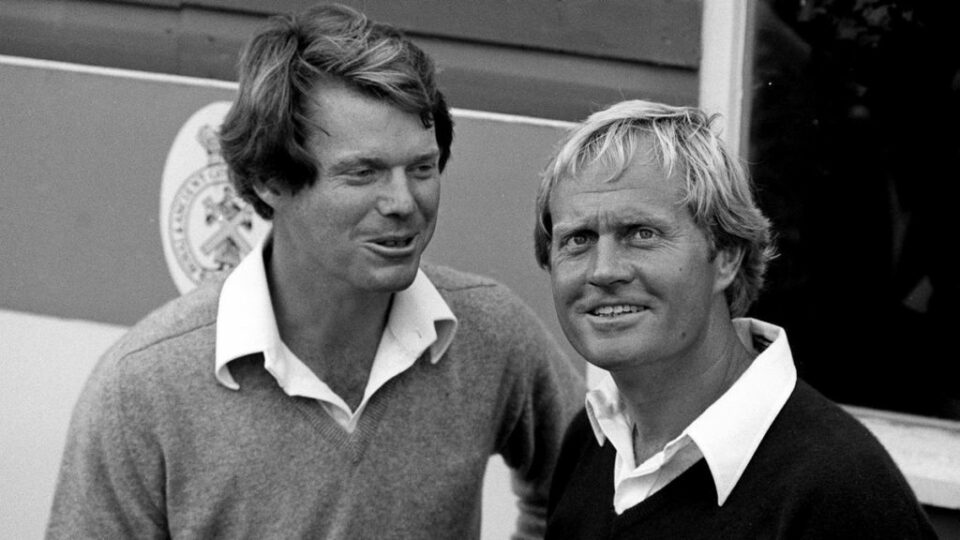Just as time does not stand still, neither do the operations of Augusta National Golf Club. The 87th edition of The Masters promises to be a fascinating one to watch. The most noted element centers around the lengthening of the iconic par five 13th and the scrutiny that will engender. The risk/reward 510-yard hole had, in recent years, become more reward and less risk.
Masters week begins in the morning. #themasters pic.twitter.com/YHBJDAgnAi
— The Masters (@TheMasters) April 3, 2023
The new tee stretches the hole to 545 yards and likely will mandate a much higher number of players hitting driver from the tee in order to secure proper positioning around the dog-leg.
Last year Masters Chairman Fred Ridley said: "Admittedly, and I've said this before, the 13th hole does not have the same challenges that it has historically. I can just remember as a young guy watching the Masters, you know, some of the triumphs and tragedies. And while we still have those, the fact that players are hitting middle to short irons into that hole is not really how it was designed."
Resurrecting the "momentous decision”, as envisioned by Jones, is the central rationale.
Augusta National has been at the forefront of implementing a series of upgrades to the Bobby Jones / Alister MacKenzie design over the years. When Tiger Woods won his first Masters in 1997 the total length was 6,925 yards. For this year's Masters that figure has now increased to 7,545 yards, the longest in tournament history.
Five architects were asked to provide their respective thoughts on a wide variety of topics dealing with the conduct of The Masters and the manner by which officials at Augusta National are moving forward in both preserving and maintaining the pedigree of the course.
A spring tradition draws nearer. #themasters pic.twitter.com/fIpkXlWFs0
— The Masters (@TheMasters) April 2, 2023
1) This year's Masters will likely be using a new back tee for the 13th. The par five will play to a maximum of 545 yards. What's your assessment on having the hole lengthened and how do you see the new tee impacting this year's event?
Martin Ebert: Everyone wants to see the best golfers in the world having to consider the risks of taking on the heroic second shot over Rae’s Creek. It will put even more of a premium on drawing the tee shot around the corner as the hole was intended to be played.
When the dust settles, it will be interesting to review the statistics of how many players went for the green in two and how many ended up in the creek when compared with previous years. That will show how the new hole length has impacted the players and the tournament overall.
Chris Cochran: Having golfers able to drive just around the corner but now left with a long iron or fairway wood into the green is a good thing. It makes the hole much more dramatic and more in line to its original design intent. Think of the drama when Curtis Stange was making his run on the last day and hit into the water, or Chip Beck’s lay-up, or Jack’s run in 1986. For me, that's much more fun than watching players hit short irons into it.
Brit Stenson: It will be interesting to see the impact of adding what has to be the most expensive new tee in the history of the game. The most common miss now is through the dog-leg into the pine straw. Lengthening the tee shot may actually lessen that miss. At 545 yards the hole is still a very reachable risk-reward par five.
Ken Moodie: It’s a pity Augusta National felt the need to lengthen the hole as a result of equipment technology, in order to maintain the original challenge and strategy of the hole, including buying additional land which most golf clubs would not have the means or option to do. However, the new tee will undoubtedly restore some of the teeth the hole once had and make it a less obvious two-shot hole, which should lead to a more exciting spectacle.
Troy MG Vincent: Lengthening the 13th hole was inevitable with the acquisition of the new property in 2017. It is the last hole of the famous Amen Corner trio and is still a classic risk/reward hole. It was necessary to add more distance because players of today are able to cut the corner, making the hole play significantly shorter. Lengthening the back tee and providing the same surroundings of heavily planted trees and vegetation creates the same feeling of hitting out of a narrow shoot, putting more emphasis on the ability to work the ball quickly to the desired flight path.
Hole No. 13 | Azalea | Par 5 | 545 yards
One of the most recognizable holes at Augusta National, No. 13 welcomes captivating drama. A new teeing position adds length to the hole this year. With Rae’s Creek and bunkers protecting the green, hazards are omnipresent. #themasters pic.twitter.com/tP96P6vjCa
— The Masters (@TheMasters) April 7, 2023
2) Given the concerns from architects and others that adding more and more yardage to a given golf course is a detriment on a number of levels, could a specific Masters golf ball, one traveling a certain percentage of lesser distance, be a viable option for the event or would that simply add even more confusion to the overall issue?
TV: Augusta National is in a position to set the standard for the future in regards to requiring tournament players to use a specific ball. Tradition is an extremely valued component of golf and the club. However, without the governing bodies, USGA and R&A approval, it seems less likely this will occur.
KM: I would welcome the use of a new ball and the Masters would seem the perfect place to introduce it. With the recent announcement by the R&A and USGA, it sounds like one will be adopted in time for male elite golfers, although it sounds a few years away. However, rather than limiting it to special events, I would prefer to see it adopted for all golfers within the rules of golf and design it so it has very little impact on shorter hitters. Changing the ball would be a low-cost option for golfers, compared to having to replace an expensive driver, and would be easy to phase into the game.
BS: I would certainly agree that the modern golf ball is having a detrimental effect on some great old courses, and it is making it harder for golf to be sustainable. A Masters golf ball could provide a valuable demonstration of rolling back the ball’s dynamics, but really the USGA and R&A should just go ahead and roll back the ball by 10-15% for everyone.
CC: If anyone could get away with it, it would be Augusta National. As progressive as they have been in golf – most recently with juniors and women – I am mildly surprised they have not done it already. I would love to watch them do this and see today’s best players have to play the golf course more like all the great players that came before them.
ME: Not any more, following the Model Local Rule which The R&A and USGA announced. However, that assumes Augusta will adopt the rule. I do not think there was any chance Augusta would have introduced a Masters Golf Ball. If that had been a possibility, surely they would have done that rather than going to the trouble and cost of lengthening the 13th.

Related: The Enduring Vision of Bob Jones
3) Has Augusta National evolved far beyond the original intent sought by Bob Jones and Alister MacKenzie in having an inland links version of The Old Course at St. Andrews?
CC: Yes but the game has evolved so much, especially among elite players. The golf ball goes so much further and straighter than when it had balata covers and struck by wooden clubs. I think Augusta National has done a great job of maintaining a wonderful, playable members course that can also double as a great tournament course that tests the best players in the world by simply putting the players on a back tee, tucking pins and adding a lot of speed to the putting surfaces.
BS: Augusta National has certainly changed dramatically in many ways since its original design. But it is my understanding it was Bobby Jones’ love of The Old Course’s dramatic greens that inspired the design. Those greens have obviously gotten much faster than they were in the early days, so, if anything, they have enhanced the original design concept of the angle of attack being paramount. On the other hand, planting trees, narrowing fairways, and growing the rough has reduced the optional lines of attack off the tee, so that has worked against the original design intent.
ME: While Jones and MacKenzie would recognize the landscape they made their wonderful creation over, Augusta National has certainly evolved in such a way that I believe they would not recognize the detail of their design.
The bunkers are totally different in appearance and many of the greens have completely changed. However, the need for the golfers to think their way around the course must be similar to the way it was in the 1930s so, in that sense, there are still similarities with The Old Course.
TV: Absolutely, the golf course has evolved from having an inland links version of St. Andrews. There were limited trees, classic bunkering style, streams and not ponds and odd shaped greens when the course first opened. Taking into account the tremendous advancements made in agronomy, maintenance, construction techniques and equipment since 1931, the intent to provide the best golfing experience and whatever is required to continuously improve upon that experience seems to be the intent Bob Jones and Alister MacKenzie envisioned.
KM: The planting of more trees on the property has certainly moved away from the original vision but the absence of long rough, and the playability of the pine-straw, help to give the illusion of wider fairways and provide more playing options.
Amongst the pines. #themasters pic.twitter.com/if0V4j58Ua
— The Masters (@TheMasters) April 9, 2022
4) Jones and MacKenzie advocated a structured fairway width and a minimized role for rough. Is this a style of design you favour and what one course, that you have been involved with, best exemplifies this?
BS: I have to think Jones and MacKenzie would not like the tightening of the course off the tee, taking away lines of approach. Most of my courses have ample room off the tee and have closely guarded greens.
TV: The philosophy Jones and MacKenzie envisioned for Augusta National’s strategy is interconnected with the width and angles they wanted you to play each hole. This requires the golfer to have the ability to produce creative shots. Limiting the rough would allow for shots to run out more than usual – when you consider the undulating terrain of the property – thus requiring well-executed shots and a premium on placement. We have incorporated this philosophy within a few designs, most notably Santa Maria Golf and Country Club in Panama.
CC: I think this philosophy works great at Augusta National because of how hilly the site is and how much balls can run out. Combine this with fast, heavily-pitched greens, it puts a premium on positioning tee shots and shot shaping into the greens. I don’t know why they don’t sand cap the entire fairways instead of just parts, this would help keep the golf course firmer during wet weather. American Dunes (Grand Haven, MI) is a golf course I worked on with Jack (Nicklaus) a few years ago. Much of the golf course has very wide fairways with little rough. This philosophy works well because it is a daily fee course, can get very windy and sits on beautiful sand that, when exposed, does a great job of creating the right scale for the golf course and frames the holes wonderfully.
ME: Virtually all of our studies of the great old courses show that fairways have become far narrower over the years. We invariably recommend a restoration of wider fairways but the playing of the game has changed over the years so there is sometimes a limit to how wide they should be taken back out to. The fairways at Hirono, in Japan, had become very narrow. Charles Hugh Alison’s plans showed very wide fairways and we have restored them almost back to his designed widths.
KM: I prefer to have some longer rough between the fairways but of the wispy, fine fescue variety, which adds framing and texture but will allow a ball to be found easily and played without too much difficulty. However, it is important to offer optional playing lines and different angles of approach to the green from fairway. A links-style course I designed for the Marine Golf Club, on the island of Sylt in Germany, offers a variety of landing areas on many holes including partially split fairways on holes 9 and 17.
"As for the beauty, the course stands far superior to anything I have ever played.” — Byron Nelson, 1937#themasters pic.twitter.com/R0RUYxUBvz
— The Masters (@TheMasters) April 4, 2022
5) Which specific hole do you most respect at Augusta National and why?
KM: I have always loved the 13th hole since, even at its relatively short length for the top players, it always creates drama and yet it is very fair to play. It is a relatively easy three-shot par-5, with a good bail-out area to the right of the green which will leave a chip into the face of the slope. However, if you try to play a long second shot into the green, from the right-to-left sloping fairway, it is very easy to either pull the approach shot into the left green bunkers or double-cross yourself and push your ball into the stream on the right.
BS: The fifth hole commands great respect. Par there is an accomplishment.
CC: I am a huge fan of the golf course. I respect all the golf holes there for what they are and where they fall in the round.
ME: I was thinking of nominating the 13th with its requirement for a drawn tee shot and faded second shot but I think I will opt for the 15th. I am amazed at the shallowness of the green and the nerve and skill that this demands of the players for a second/third shot and the pitch over the pond, if they have just ended up in it, and the chip back to the green if they have overshot the surface. It probably has the most horror stories associated with it compared to any other hole although the 12th is maybe another candidate for that title.
TV: The 10th hole has always been a favorite of mine. Looking down the fairway at the cross bunker with the fingers torqued and sand line flowing throughout the bunker… what a great view. The player doesn’t want to be left or too far right as this is not the angle you want when hitting into a green that slopes from back to front, especially during the tournament.
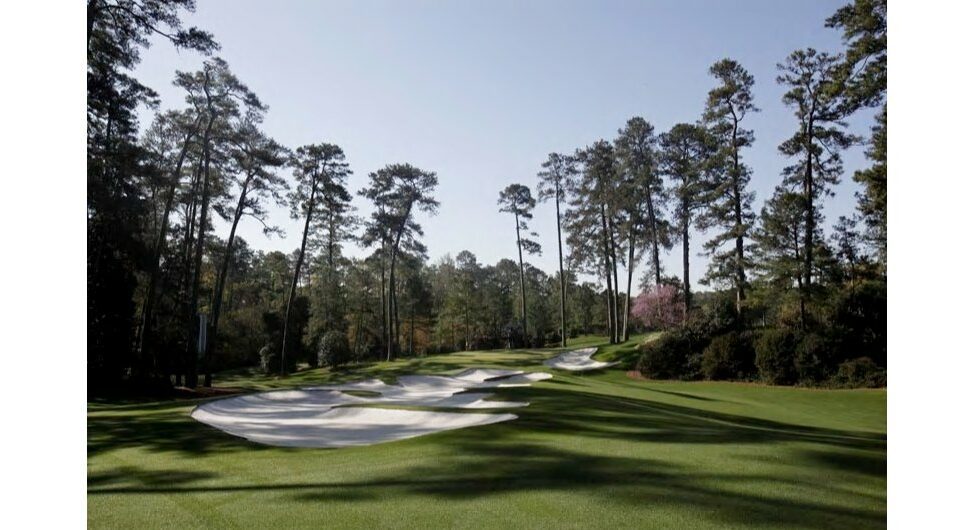
6) Which hole do you believe needs to be improved and what specific suggestions would you offer to do that?
TV: I was asked these questions a few years ago and my answer was the third. Originally, there was one fairway bunker on the left. In 1983, the bunkering was re-designed to include the current four bunker layout. It would be nice to see this go back to a single bunker but keeping with the style of the first, eighth and 10th fairway bunkers.
ME: I have regularly said that the 11th should be returned to the concept which was shown on some of the earliest plans of the course with the central bunkers dividing a left and right-hand route for playing the hole. That would be MacKenzie through and through and provide real strategy to the tee shot. The recent changes have improved the hole but, for too long, the players were being told what to do on the tee. Hit it as far as possible and on the only line possible.
CC: I don’t have a specific hole I think needs improving, but I think the golf course would play and look better if the top dress dams around the greens were removed.
BS: The 11th hole is a great par four but I think the changes there – adding trees and reducing fairway width on the right side – are unfortunate. I would go back closer to the original design and open up lines of play.
KM: I would probably opt for the third and get rid of the cluster of bunkers to the left of the fairway which is not characteristic of MacKenzie’s designs. He would have created a diagonal bunker sequence offering a range of optional landing areas with risk/reward benefits instead. Given the short nature of the hole for professional golfers the last bunker on the diagonal would need to be placed quite close to the green to make it more challenging to take driver and suggest that a lay-up with an iron or hybrid might be the best option.
Hole No. 2 | Pink Dogwood | Par 5 | 575 yards
A dogleg-left par 5 that may be reachable in two. Large, deep greenside bunkers demand special attention on the second shot. #themasters pic.twitter.com/yZla9hBCib
— The Masters (@TheMasters) April 7, 2022
7) If Jones and MacKenzie were alive today what one specific question would you ask either or both of them?
ME: For Bobby Jones: How can we get the players to play more quickly? For Alister MacKenzie: What would you do with the bunkers at Augusta?
BS: Gentlemen, are you okay with the way the game has evolved from essentially a ‘ground game’ to an aerial ‘bomb and gouge’ game?
CC: Would their design philosophies change based upon improved equipment – especially the golf ball – improved agronomics and golf course conditioning – especially with green speeds at 13-14 – and pins sitting on 3% plus slopes.
TV: Considering all the advancements that have been made with technology as it relates to construction techniques, maintenance (equipment and practices), golf equipment and the storied history of the tournament, what are their thoughts on the improvements that have occurred and do they disagree with any and why?
KM: I would ask Alister MacKenzie to come to dinner and discuss his work and design philosophies, since one question would not be enough. If he would like to bring his friend, the incredible amateur golfer Bobby Jones, how could I refuse.
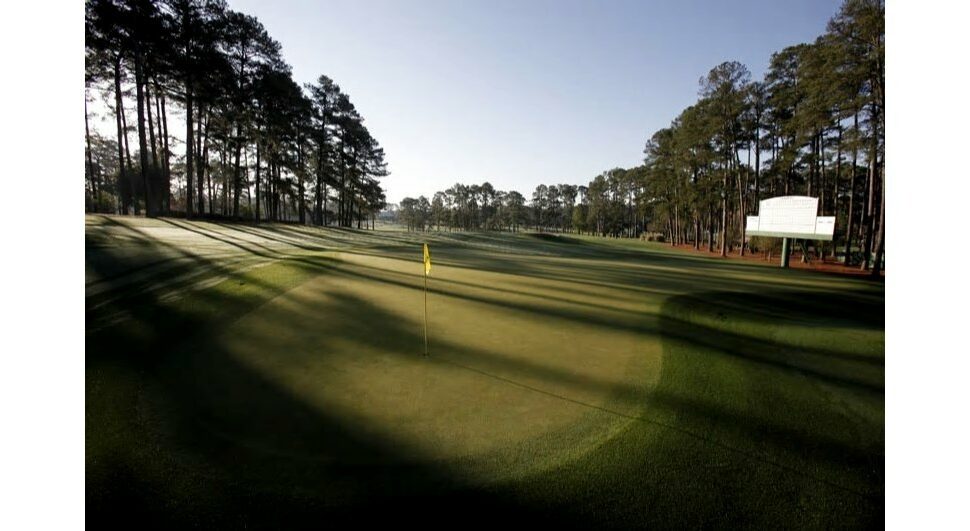
8) Both Jones and MacKenzie were proponents in having players secure optimum angles for approach shots in order to score low. However, given the distances elite players drive the ball do angles still have a crucial role to play at Augusta National or is the concept only meaningful for those of a lesser skillset?
CC: Great question. A certain green contour or the direction the pin area is pitched, or the width or depth of a pin area, has much to do with the optimum angle approach into the green as well as the firmness of the green. On soft greens, with the elite player, I don’t think angles are as critical as the designer would like them to be, but if the green is firm and well designed, I think it is still relative. The elite players are so good that hitting a green in regulation may not be the challenge it once was, but to get the ball consistently close to the pin, I think it helps.
ME: There are some wonderful old plans which show playing lines for some of the holes which are curved in the approach areas of the greens, suggesting the best line into them and that the ground game was very much a possibility for approaching them. Modern day players have the power to lessen the need to come in from the right angles and modern course set up reduces that further. But there is still a difference for all golfers in terms of where it is best to approach the flag from.
TV: Regardless of the skill level, angles will always play a crucial role at Augusta National. There is no argument that the elite players are hitting the ball further but this has been the case for many years now. The average score for the champion over the last 10 years is -11.7 over four rounds and the 10 years before that it was -9.6. We have all witnessed errant shots during tournaments and what is possible with one or two bad holes. The player of lesser skillset will have more difficulty with the optimum angle because it simply comes down to the skillset and inability to hit a required shot.
BS: Angles of approach are certainly less important now for the longer hitters, but given the severity and speed of Augusta’s greens they are still relevant.
KM: There are still many holes where it is important to find the best angle of approach, and avoid the hazards, in order to score well at Augusta which is largely due to the speed of the greens and the strong slopes they possess. However, today there is less need to be playing down the length of a green than would have been the case in Jones and MacKenzie’s day, since tour professionals will generally be playing shorter approach shots with more lofted irons. Also, with the increased accuracy of distance the top players hit shots, because of the larger sweet spots on clubs and the spin they can put on the ball, today’s pro would probably prefer more lateral leeway.
Augusta National Golf Club from above. #themasters pic.twitter.com/Ebuy5fbUsQ
— The Masters (@TheMasters) April 5, 2022
9) Minus the intersection of firmness and wind velocity, is there any other way to hold back the talents of the world's best players?
CC: Deep rough, awkward lies, bad lies, tight fairways, trees, bling shots, OB, water hazards, poor agronomic conditions all make for tough scoring conditions, but I am not sure how popular creating courses like this would be and if elite players would want to play courses like this. Maybe a little combination of each of these would be palatable?
ME: Tongue in cheek, I think, Peter Dawson always advocated there should be no tee pegs allowed. The other thing is to reduce the number of clubs to seven. That would promote far more creativity and interest for the players and golfing public.
KM: Carefully sculpted greens and tight pin positions obviously have a key role, as evidenced at Augusta, but also clever fairway bunkering strategies. However, when some of the players can hit a three-wood 300 yards accurately then it is very difficult to make a golf course challenging without it having significant length.
BS: Wind and firmness are certainly the golf course architect’s most effective, albeit unreliable, defence in the modern game. On the other hand, fans don’t mind seeing the world’s best golfers shoot low numbers in benign conditions.
TV: This is a difficult question as it seems on any given day, someone can go low, and “these guys are good!” The obvious answer would be yes but the reality is how many of the world’s best players would play the course? We have seen both sides of the coin with deep rough, narrow fairways, bold contours on greens as well as hard and fast fairways, tight cut with little rough, perched greens with capes etc. Regardless of how the course is set up, someone still wins the tournament. The question would become, how many top players would subject themselves to these types of conditions on a consistent basis, Majors excluded?

Related: The 2023 Masters sets a new standard for intrigue
10) The USGA and R&A just announced action in which the option to invoke a local rule for elite competitions can be adopted that permits a different golf ball than the ones being used today. What's your position on this issue?
TV: Golf fans relish seeing their favorite players hit the ball 300-plus yards. When we speak of growing the game, we have to also consider the fan base. There seems to be a very fine line between if the ball is limited for professional golfers only, will it have a negative impact on the game. If the USGA and R&A make any changes, they should be applied to professional players only.
BS: The USGA and R&A have waited too long to roll back the ball’s dynamics by 10-15%. I, for one, don’t think the game is more fun now because we can hit the ball farther than before. Modern golf clubs are way more forgiving, with much bigger sweet spots, than before, especially the driver, so that makes the game a bit easier and probably more enjoyable for a lot of golfers. But hitting the drive well past our fellow golfer or competitor gives us an advantage no matter the actual yardage. The new Model Local Rule (MLR) just announced by the governing bodies is not the right solution and will be confusing and potentially chaotic. It is very hard to draw the bifurcation line. Elite college golfers hit drives at least as far if not farther than the tour pros. Roll the ball back for everyone, have plenty of widely-spaced teeing options and we will adjust. We need to do that for the sustainability of the game now and in the future.
ME: I imagine all of the tours will adopt the Model Local Rule which will lead to bifurcation. I think that is a shame. I would like to understand the impact of the modified ball on the hitting distances of ordinary club golfers. Perhaps the impact will be greatest on the strongest players and the loss of distance will be minimal for club players. If that is the case, maybe we can all play the same ball again and that can be made more palatable for club golfers by tees being moved up which should happen anyway.
CC: I think this is a good thing for golf.
KM: I would advocate a slightly lighter golf ball that would, in theory, come off the club with greater velocity, but slow down more quickly as a result of air friction. This should mean it should have little or no impact on the playing distances of shorter hitters but should significantly reduce the drives of the longest hitters. If this worked in practice, it would compress the wide disparity in playing length between golfers of different swing speeds and make it easier to design a golf course which would suit a wide variety of golfers.
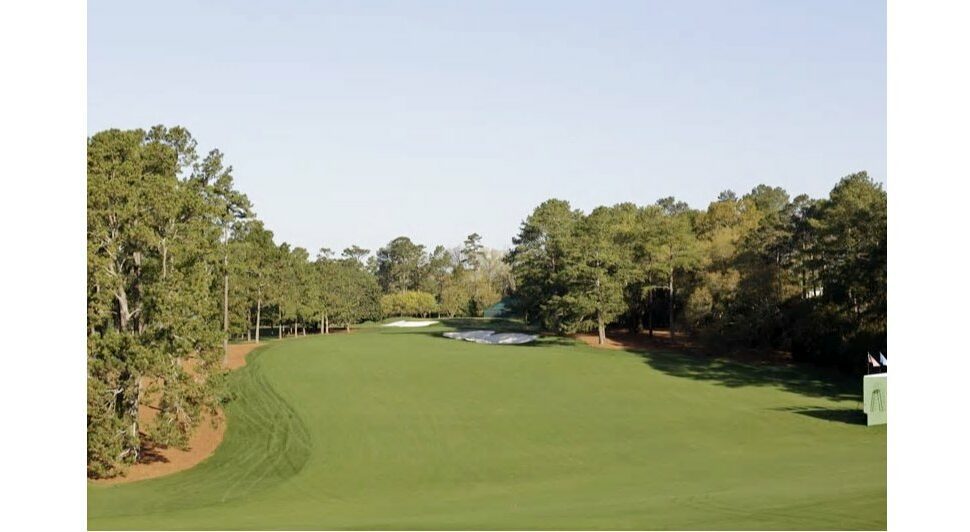
11) Has architecture today moved away from creating longer and more difficult courses to those with greater elasticity for the broader range of players?
KM: Fortunately, most golf clubs have given up the desire to be ‘championship courses’, which was a trend some 20-30 years ago. They realised they have to make the best of what they have. It is very tough to provide a golf course with enough elasticity to suit a broad player range since the disparity of reward, which the current ball gives, for every extra mile-per-hour of swing speed, is too high. To make it playable from the front tees, golfers need to be hitting a similar club into the green for their approach shot as the longer hitters.
BS: Given a site with enough land area, many owners still want a long golf course. But that is not really sustainable going forward – more maintenance, more water, more chemicals. Only a very small percentage of players want to play a brutally long and hard golf course.
TV: Golf course architecture has changed significantly over the last 20 years. We have been involved with more renovations and re-designs versus new courses. To my knowledge, there is no one shying away from creating longer, more difficult courses. What we have seen is a trend to create state-of-the-art practice facilities and, in many instances, a short course to complement an existing course. We have also experienced an increase in stand-alone 9-hole courses or a reversible course. All of these items are ways for clubs to maximise what they can provide for their memberships and, based on the results, we are seeing a steady increase in participation.
CC: More elaborate and comprehensive practice facilities as well as par three courses and shorter courses are much more the norm today than they were 15 years ago. On renovations we see a lot more forward tees and flexibility in tee yardages to be played. Utilising a par three tee on each hole of a championship course is also very popular these days. I often find, when discussing renovations projects with members and talking about making them more playable and enjoyable, the loudest critics, most of which are higher handicap players, are those that do not want to make the course too easy. Even though it is not in favour with the golf media and golf ratings these days, there is still a huge fan base for long, penal golf courses.
ME: I think it has always been the best architecture to have the aim of providing variety of challenge rather than difficulty of challenge. There has been a move back to the introduction of shorter versions of par 3s and par 4s. The new 17th hole at Royal Liverpool for The Open this year will be just 135 yards but no less challenging for that. Course set up for major events has also become more creative with the length of holes being adjusted to provide more options for their play and that should be the case for all standards of golfers.
April at Augusta National. Worth the wait. #themasters pic.twitter.com/LA1gJsCver
— The Masters (@TheMasters) April 3, 2022
12) How difficult is it for you when dealing with prospective clients, to convince them that what one sees at Augusta National is outside the realm of reality for just about all other clubs?
ME: Most people have enough sense to understand Augusta takes course conditioning to the most extreme level and is unsustainable for the vast majority of courses and clubs. Some people regard the course characteristics at Augusta as detrimental to the game. Too much emphasis on the colour green and perfection. However, I would counter that by saying The Masters and Augusta National has inspired so many golfers to take up the game. That was certainly the case for me.
CC: I still run into this but not nearly as much as I used to. The USGA and media have done a good job of educating golfers on the idea of sustainability, but 99% of golfers remain unconvinced that the colour brown on a golf course is good.
TV: This question was more prevalent 30 years ago but not very common today. Creating the bunker style or contouring greens similar to Augusta National has been done, the reality becomes how the course is maintained and what it takes from the number of employees, amount of equipment and facilities to accommodate the courses needs which all comes down to cost. When many clubs begin to budget for such items, they quickly realise maintaining to such standards is not possible based on budget.
BS: I think most clients are realistic about Augusta National’s over-the-top conditioning.
KM: I think it is more difficult for greenkeepers to deal with, than architects, since the Masters always seems to herald the start of the golf season in northern Europe, and golf club members question why their course does not look as good when it is just starting to come out of winter. We can always talk to clients about the implications on the budget and they will soon see sense.
The Participants
Martin Ebert
Director, Mackenzie & Ebert
Martin worked in the golf course design business for 33 years. He has advised seven of the ten Open Championship venues, including overseeing changes to the Ailsa Course at Turnberry and two new holes at Royal Portrush for The 2019 Open. He has also recently worked with Royal County Down (NI) and on other projects in the UK, Ireland, Canada, Spain, Peru, Chile, Argentina and Japan.
Ken Moodie
Principal Golf Course Architect, Creative Golf Design Ltd.
Ken combined his love of golf and landscape design by embarking on a career in golf course architecture in 1989 and nine years later established his own firm – Creative Golf Design Ltd. Since then the Scotsman has been involved in the design, or redesign, of more than 100 golf courses. He has also remodeled and restored a number of historic Alister MacKenzie-designed courses, at clubs such as Alwoodley and Moortown, and won the Golf Inc Renovation of the Year Award for his work at the latter. Moodie is a member and Past President of the European Institute of Golf Course Architects.
Brit Stenson
Principal, Brit Stenson Design, Inc.
Brit spent seven years with the PGA Tour (1984-1991), first as Project Manager for the TPC at Avenel, then Director of Construction and then Director of Design. Stenson was IMG’s in-house golf course architect (1991-2016), working with IMG’s clients to design more than 70 courses worldwide. He is currently President of the American Society of Golf Course Architects (ASGCA).
Troy MG Vincent
ASGCA , Golf Course Architect Vincent Design
Troy is a member of the prestigious American Society of Golf Course Architects (ASGCA) and Golf Course Superintendents Association (GCSAA). He has more than 30 years experience designing award-winning golf courses around the world and many of them have played host to PGA, Champions Tour and European Tour events. He also worked as a Design Associate for Jack Nicklaus for 15 years.
Chris Cochran
Senior Design Associate, Nicklaus Design
Chris has a turf degree from Iowa State University and played college golf at Wichita State and Iowa State. He remains an avid golfer and enjoys playing different golf courses all over the world. He is beginning his 40th year working with Jack and Nicklaus Design. A member of the ASGCA and GCSAA, his major renovations to notable tournament courses include Valhalla GC, The Australian GC and Muirfield Village GC.


